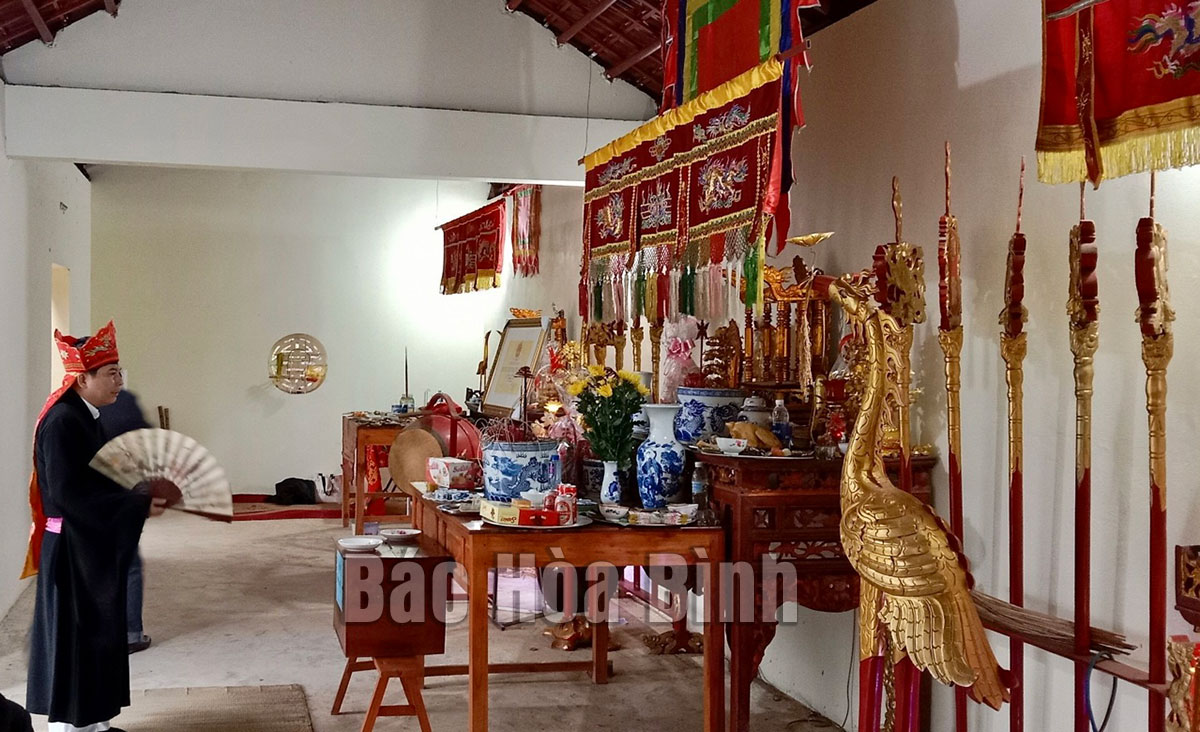



The spiritual rituals of Khenh communal house are fully implemented.
Located at the foot of Khu Khenh mountain, Khenh communal house worships the ancestors who have contributed to Muong ethnic people, helping Muong Khen people to be peaceful with good crops, helping the people, to be healthy and the animals breeding. The legend tells that Ngo invaders came to invade Muong land in the past, Mr. Chuong Tin - Ms. Trieu An used Khu Kheh mountain as a base to recruit Muong soldiers and train them, then they brought the troops to fight against Ngo invaders. They defeated the enemy and killed them. They decapitated the enemy general's heads and brought them to Khu Khenh to sacrifice to heaven and earth. Later, they turned into Khu Khen. Muong people remember their merits, so they set up a communal house to worship. The worshiping figures in the communal house include Mr. Truong Tin, Ms. Trieu An and the village gods...
Being restored and held annually since 2018, the Festival of Khenh Communal House in 2022 - the traditional event of folk belief of the People of ethnic groups in the area is held separately for the ceremony, not for the festival part as every year in order to ensure the prevention and control of Covid-19 epidemics. However, it can maintain and promote the values of the traditional cultural identity of Muong ethnic group. In addition to fully performing the spiritual rituals, the organizing committee conductes the ceremony of bestowing lucky rice at the beginning of the year with the desire to bring luck, fortune and wealth to the families.